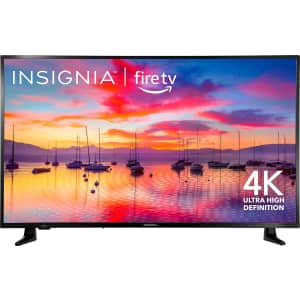
Save on select TVs and accessories from Insignia, Amazon, TCL, Toshiba, and more. We've pictured the Insignia F30 Series 50" 4K LED Smart TV w/ Alexa Voice Remote for $200 ($100 off). Buy Now at Amazon

Save on LED and QLED models. We've pictured the Vizio V4K55M-08 4K 55" HDR LED UHD Smart TV for $295 ($155 off). Buy Now at Walmart

That's $80 off and the lowest price we've seen. (Similar models go for around $220 elsewhere.) Buy Now at Amazon
- HDR 10+, Hybrid Log-Gamma (HLG)
- 4 HDMI inputs
- Model: 43R4A5R
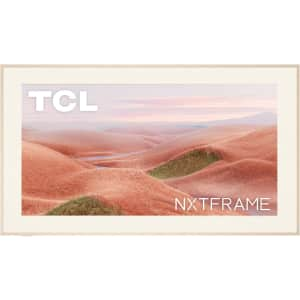
That's $502 off list and the lowest price we could find. Buy Now at Amazon
- 3840x2160 (4K) native resolution at 120Hz
- Dolby Vision, HDR10+, HDR10 & HLG
- Google TV smart apps
- Dolby Atmos audio
- 4 HDMI inputs
- curated art gallery mode
- Model: 65A300W
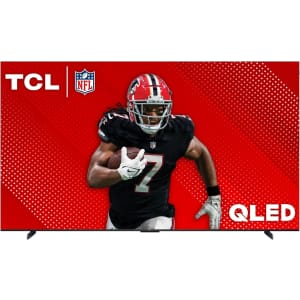
That's $198 under our Ocrtober mention, $1,400 off, and the lowest price we've seen. Buy Now at Amazon
- 4K resolution
- HDR PRO+ with Dolby Vision, HDR10+, HDR10, & HLG
- 120Hz refresh rate
- Google TV
- Model: 98Q651G
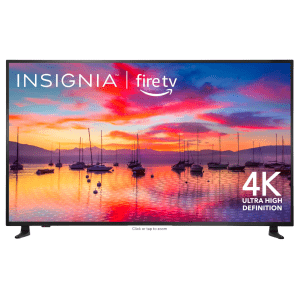
32" models start at $79.99, and the range, ofavailable sizes goes up to 85" with up to $200 off. We've pictured the Insignia F30 Series NS-65F301NA23 65" 4K HDR LED UHD Smart TV for $339.99 ($110 off). Buy Now at Best Buy
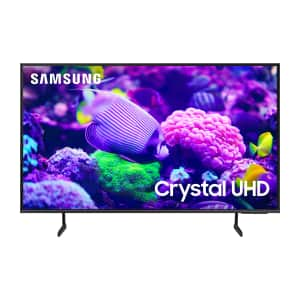
Buy one of the three Samsung TVs detailed below, and you'll get the Samsung 40" 1080p TV for free. That's a $250 value stacked on top of any existing savings on the larger TVs. The deals, all $248 less than buying both TVs separately elsewhere:
- Samsung DU7200 Series UN85DU7200FXZA 85" 4K HDR LED UHD Smart TV for $999.99 w/ free TV (pictured)
- Samsung DU8000 Series UN85DU8000FXZA 85" 4K HDR LED UHD Smart TV for $1,499.99 w/ free TV
- Samsung DU9000 Series UN98DU9000FXZA 98" 4K HDR LED UHD Smart TV for $2,499.99 w/ free TV
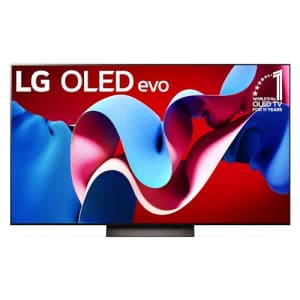
That's the best deal we could find by $2, a savings of $1,203 off list, and the best price we've ever seen on one of the highest rated OLED TVs in this class. Buy Now at Amazon
- 4K resolution
- Dolby Vision, HDR 10, & HLG
- 120Hz refresh rate
- webOS
- works w/ Amazon Alexa, Google Assistant, and Apple HomeKit
- 4 HDMI inputs
- 3 USB 2.0 ports
- Model: OLED65C4PUA
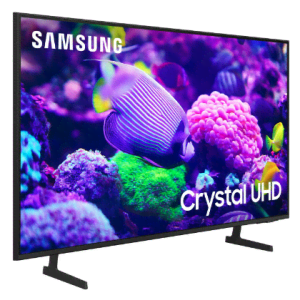
That's a $60 savings. Buy Now at Walmart
- 3840x2160 (4K) resolution
- HDR 10+
- Tizen OS
- Bixby
- HDMI
- Model: UN43DU7200BXZA
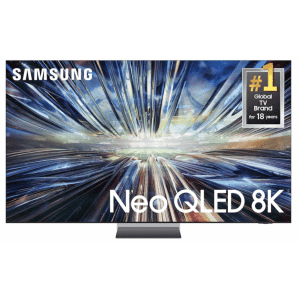
As part of its Early Black Friday sale, Samsung offers the following discounts on these 8K TVs:
- 65" for $3,500 ($1,500 off)
- 75" for $4,500 ($1,800 off)
- 85" for $5,500 ($2,500 off)
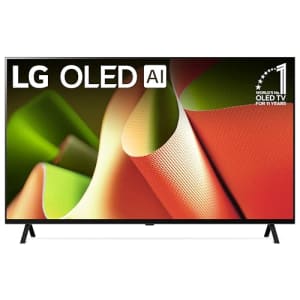
Save $200 compared to the typical price of $1196.99 on this high-performance 4K OLED TV with features for an immersive viewing and gaming experience, including Dolby Vision and Atmos support, and fast response times. Buy Now at Amazon
- 4K resolution
- HLG, HDR10, Dolby Vision
- 120Hz refresh rate
- WebOS
- Alexa built-in
- 4 HDMI ports

It's $602 off and the lowest price we could find. Buy Now at Amazon
- 4K resolution
- HLG, HDR10, HDR10+, Dolby Vision
- 144Hz refresh rate
- Google TV
- 4 HDMI ports
- Model: 65U8N
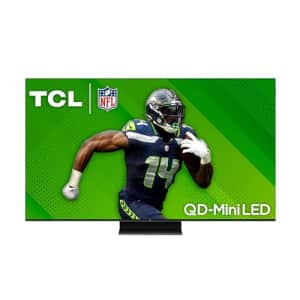
That's $300 off and the best price we could find. Buy Now at Best Buy
- 4K UltraHD Resolution - Experience incredible detail with 4X the resolution of 1080p Full HDTVs.
- QD-Mini LED - Up to 1,500+ local dimming zones provides stunning contrast with super dark blacks to intense whites.
- QLED ULTRA Quantum Dot Technology - Rich, vibrant colors covering nearly the entire DCI-P3 color space to bring images to life.
- High Brightness ULTRA LED Backlight - Up to 1,500 nits peak brightness, QM7 models create ultra bright images with dazzling specular highlights, for a truly immersive and realistic cinematic experience.
- 120Hz Panel Refresh Rate (144 Hz Variable Refresh Rate) - Watch action-packed movies, fast-paced video games, and live sports with an ultra-smooth viewing experience, free of motion blur.
- TCL AIPQ PRO Processor with Deep Learning AI - Powerful, advanced processor intelligently optimizes the color, contrast, and clarity for an unrivaled 4K HDR experience.
- HDR ULTRA with Dolby Vision IQ, HDR10+, HDR10, & HLG - Enjoy enhanced contrast, accurate colors and fine details utilizing all the most advanced HDR formats.
- Motion Rate 480 with MEMC Frame Insertion - Combines multiple motion enhancement technologies for best-in-class motion clarity.
- Game Accelerator 240 - With up to blistering fast 240 VRR, enjoy more responsive gameplay without lag, designed to keep you at the top of any leaderboard.
- Auto Game Mode (ALLM) with AMD FreeSync Premium Pro - Automatically enables game mode for the lowest possible input lag and latency for an unmatched gaming performance.
- Model: 55QM751G
- UPC: 846042088558
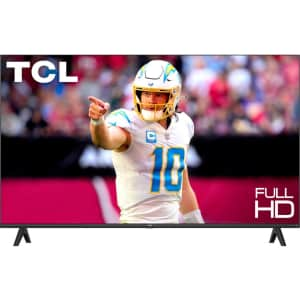
That's $110 off and the lowest price we could find. Buy Now at Best Buy
- 1920x1080 (1080p) resolution
- Fire TV
- works w/ Amazon Alexa & Apple HomeKit
- 2 HDMI ports
- Model: 40S35F

That's $600 off, $300 under our mention from a month ago, and the best price we've ever seen. Buy Now at Best Buy
- 4K resolution Dolby Vision, HDR 10, & HLG
- 120Hz refresh rate
- webOS works w/ Amazon Alexa, Google Assistant, and Apple HomeKit
- 4 HDMI inputs
- 3 USB 2.0 ports
- Model: OLED77C4PUA
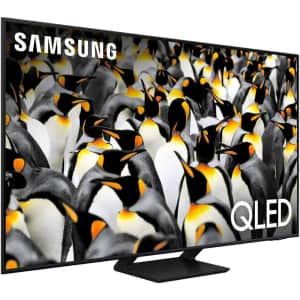
Big-brand 50" smart TVs start at $250, 75" models at $850, and 85" at $1,300. Pictured is the Samsung Q70D Series QN65Q70DAFXZA 75" TV, which is $800 (a $200 drop). Shop Now at Best Buy
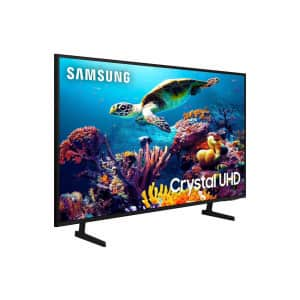
It's $2 less than Best Buy's Black Friday price (and a savings of $82 off list). Buy Now at Walmart
- 4K resolution
- HDR
- Samsung Tizen OS
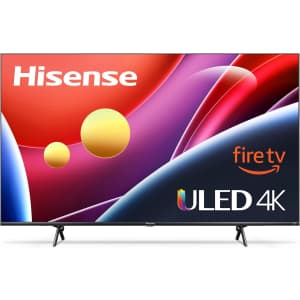
That's $148 under our October mention and tied as the lowest price we've seen. Buy Now at Amazon
- Dolby Vision
- Game Mode Plus VRR
- HDR 10+
- Voice Remote
- Compatible with Alexa
- Model: 65U6N
- UPC: 888143017730

My Best Buy Plus and Total members get early access to these Doorbuster savings — an extra $50 off this TV's price, for a total savings of $200. That makes this the third-best price we've ever seen for a Samsung 75" 4K TV.
My Best Buy Plus and Total are paid memberships, which cost $50 and $180 annually respectively. Buy Now at Best Buy
- 4K (3840x2160) native resolution
- HDR10+
- Tizen smart apps
- 2 HDMI inputs
- Model: UN75DU6950FXZA
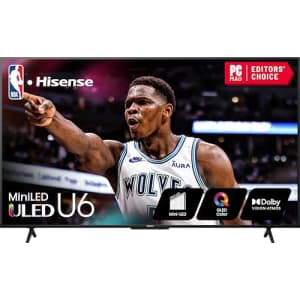
Save $50 compared to the typical price and $150 compared to the list price on this 75-inch Hisense TV with cutting-edge display and sound technology, ideal for an exceptional viewing and gaming experience. Buy Now at Amazon
- 75" 4K mini-LED display
- Quantum Dot for vibrant colors
- Dolby Vision and Atmos support
- Game Mode Plus and Motion Rate 240
- Includes Google TV interface
TVs: The Basics
Buying a new TV can be overwhelming -- the size, the specs, manufacturer-specific jargon, and the expectation that a new set should last at least five years means that your head will be swimming with numbers, even before price gets factored into the equation. To make the buying process easier, the experts at DealNews are always seeking out the best TV deals to share with you. And here we put together helpful information to know before you buy your next TV.
Common TV Terms
HD: High Definition Television, or a television broadcast with a resolution of at least 720i, although commonly seen at 1080p.
4K/UHD: Commonly refers to a native resolution of 3840x2160, although the professional industry standard is 4096x2160.
HDR: High Dynamic Range. HDR refers to the color gamut and brightness of a display. Many HDR subcategories exist, and the most popular ones include HDR10, HDR10+, and Dolby Vision. (For more information, see our HDR guide.)
LED LCD/QLED/OLED: Refers to the actual illumination/pixel panel of the TV.
- LED LCD: Light Emitting Diode/Liquid Crystal Display. It's by far the most inexpensive and common panel in consumer TVs. It utilizes LEDs behind or on the edges of the LCD panel to illuminate the pixels in large localized groups.
- QLED: Quantum-Dot Light Emitting Diode. The pixels in these panels are lit by LEDs along the edges of the panel (similar to LED LCD panels), but the TVs also employ a quantum dot filter to achieve higher brightness than OLED panels, at the expense of response time, contrast, and black levels.
- OLED: Organic Light-Emitting Diode. These TVs essentially have a thin film that can illuminate individual pixels when supplied with current, thus creating more brightness and a truer black level. These also tend to be much slimmer TVs, as they don’t employ traditional LED backlighting.
Refresh Rate: This is the speed at which a display refreshes the image. The faster this happens, the less motion blur is observed in quick-moving images. The standard is 60Hz, although 120Hz (and higher) are quickly becoming mainstream. It should be noted, however, that many manufacturers often obscure the actual specs with terms like “motion rate” or “effective refresh rate.”
TV Deals by the Numbers
We’ve listed nearly 500 of the best deals on TVs just this year. Of these, the vast majority of those on sale were smart TVs, although some of the lowest prices we’ve seen per size category have been for non-smart sets. (From a personal perspective, I feel that combined with the lower outright price, the value in having a non-smart TV lies in a hassle-free upgrade as new streaming media players come to market. No need to worry about a manufacturer phasing out the updates for your set!)
OLED TVs
While OLED panels are the “cream of the crop” in terms of picture quality, that quality still comes at a premium. However, we've seen deals on new 55” OLED TVs come in around $999, compared to less than $500 for QLED sets and $400 for LED TVs. (Note that these numbers are for new units only. You can find a refurbished TV, for less than $300.)
TV Blog Articles
When Is the Best Time to Buy a TV?
Everything to Know About the Latest TV Technologies
Frequently Asked Questions
What are the most common TV features to look for?
Once you’ve figured out the size of TV you’re looking for, consider what resolution and type of panel or display you’d like when reviewing the countless tv sales. (The budget you’ve set aside will also play a large role in determining these features.) Do you want a smart TV, with baked-in streaming apps for your Netflix / Disney+ / Hulu binges? If so, will you need a set with WiFi, or can you hook it up directly to your router? How many HDMI inputs do you need? While HDMI switches are available, having a game console (or two), streaming media player, cable box, and digital TV antenna can add up quickly.
What does 'native resolution' mean?
Native resolution refers to the default resolution, or number of pixels, that the display has. It's presented as the number of horizontal pixels by the number of vertical pixels. To simplify this, most resolutions have adopted more common terms, such as 1080p (1920x1080) and 4K (3840x2160 -- roughly four times the pixels of 1080p).
What are the benefits of a smart TV?
Smart TVs are internet-enabled sets with a manufacturer-supplied operating system. They often include apps for the most popular streaming media platforms, along with web browsers, social networking and chat apps, and future firmware updates from the manufacturer. In short, if you’d like to skip the hassle of hooking up a Roku, Apple TV, or Chromecast device, a smart TV is the way to go. Additionally, many sets now feature AI assistant integration, allowing voice control with your Amazon Alexa or Google Assistant devices.
Where should I buy a TV?
Aim to find TV deals from reputable retailers, such as Best Buy, Walmart, Target, Costco, and Sam's Club. If you're shopping online, be sure to check the return policy before you buy, as you'll want to be able to return the TV if it's delivered with a defect. Additionally, if you find TVs on sale at a retailer you don't want to shop, look into price adjustment policies at stores that you do trust. There's a chance you could end up paying less without having to sacrifice confidence.
What TV should I buy?
It depends on your budget, as well as what kind of model you're looking for and when you want to make your purchase. You might trust more well-known brands, but that doesn't mean lesser-known ones aren't worth checking out.
Which TV brand is best?
The best TV brands tend to be the most popular and reliable ones, namely Samsung, LG, and Sony. Even Vizio has come to be considered one of the top-tier TV brands. However, other midtier brands are gaining people's confidence and becoming more popular, as well, including TCL and Panasonic.
Will there be TV deals on Prime Day?
TV deals are typically available on Prime Day, but you can't expect all of them to be from Amazon. Look for competitors like Walmart to offer up notable TV deals, as well. In both cases, discounts should be on well-known brands. Expect Amazon to have savings on Toshiba and Insignia Fire TVs, and for Walmart to offer discounts on brands like Vizio and LG.
Will there be TV deals on Cyber Monday?
You'll find TV deals on Thanksgiving, Black Friday, and Cyber Monday, but the question is which day will offer the best TV deals. Usually, select offers carry over from Black Friday and go through Cyber Monday, but that won't always be the case.
What are the best TV deals for Black Friday?
These change every year, but we routinely see excellent Black Friday TV deals. They can include 55" sets for around $300 from brands like Samsung and LG, or 65" sets from the same brands for around $500. And we tend to see a 32" set go for around $80, if not less.
Are Black Friday TV deals worth it?
Not all Black Friday offers are worth it, but many of the TV deals are unbeatable. We lay out the best prices for the most popular size ranges of sets in our Black Friday previews.
What is the best month to buy a TV?
November is typically the best month to find a TV deal, as that's when Black Friday falls. However, it's not the only time you'll find a good price. We've covered the best times to find TV deals outside of Black Friday, and March is the winning month outside of November. There's a chance you could find a good TV deal around the Super Bowl, but those discounts don't usually live up to the great prices we see on Black Friday.
Is OLED or QLED better?
QLED is basically a marketing term devised by Samsung and stands for Quantum dot LED. QLED displays have an LCD panel and an LED backlight, with a nanoparticle filter in between. It's meant to produce more pure and saturated colors. The term applies mainly to Samsung sets, though you can also see it on TVs from brands that have partnered with Samsung, such as TCL.
OLED is a much more common term you'll see when shopping for TVs on sale. It stands for organic light-emitting diode, and these displays don't use LCD panels in their builds. Instead, OLED sets can adjust the luminosity of each individual pixel, providing viewers with pure blacks and an infinite contrast ratio.
There are other technologies that are important to know. Find out more information in our guide to the latest TV technologies.
What size TV should I buy?
It really depends on the size of your space and budget. Measure the space you've earmarked for your new TV and make sure that the model you're eyeing will fit, whether you're planning to mount it on the wall or not. If you aren't mounting on the wall, be sure to figure out the optimal size based on how far you'll be sitting from the screen. It's recommended that 4K TVs be put at a viewing distance that's as close as the diagonal measurement of the screen. So a 65" 4K set could be at an optimal viewing distance at 5 feet, 5 inches away.
TV Shopping Tips
1. Determine Your Budget
Before you start shopping for a TV, decide how much you're willing to spend. Having a clear budget in mind will help narrow down your options and prevent overspending.
2. Consider the TV Size
Measure the space where you plan to place the TV. Ensure that the TV size you choose fits comfortably in the room. A good rule of thumb is to have a TV with a diagonal size that matches your viewing distance.
3. Understand Resolution
Learn about different resolutions like 1080p (Full HD) and 4K (Ultra HD). Higher resolution TVs offer sharper and more detailed images. Choose a resolution that suits your viewing preferences and content sources.
4. Know the Panel Technology
There are various panel types, such as OLED, QLED, and LED-LCD. Each has its pros and cons. Research and choose the one that provides the picture quality and features you desire.
5. Smart TV Features
Decide if you want a smart TV with built-in streaming apps. Smart TVs offer convenient access to services like Netflix and Hulu. Check for compatibility with your preferred streaming services.
6. Number of HDMI Ports
Consider the number of HDMI inputs you need. Ensure the TV has enough ports for your devices, such as gaming consoles, soundbars, and Blu-ray players. HDMI switches are available if needed.
7. Check for HDR Support
High Dynamic Range (HDR) enhances image quality by offering a wider range of colors and better contrast. Look for a TV that supports HDR formats like HDR10 and Dolby Vision.
8. Read Reviews and Ratings
Research TV models by reading reviews and user ratings. This can provide insights into real-world performance and reliability. Websites and forums dedicated to home entertainment are valuable resources.
9. Consider the Brand
Established brands like Samsung, LG, Sony, and Panasonic often offer reliable TVs. However, don't rule out lesser-known brands that may provide good value for your money.
10. Check Warranty and Return Policy
Review the TV's warranty coverage and understand the manufacturer's policy on defects and repairs. Additionally, check the retailer's return policy in case you encounter issues with your purchase.
By following these TV shopping tips, you can make an informed decision and find the perfect TV that meets your needs and budget.
What is the most reliable TV brand?
The most reliable brands tend to be those that are top sellers, as well. In this case, the best TV deals to look for if you're concerned with reliability are Samsung, LG, and Sony offers. Not all TVs are created equal, though, so once you choose a brand, be sure to research specific models.
William has been a part of the DealNews team since 2014. He started as a content writer, and has worn hats in a myriad of roles ever since - eventually becoming the head of the Travel team. In that role, he researches airfare, cruise, hotel, and vacation deals galore, and keeps tabs on industry trends. When he’s not sharing travel tips, William is the DealNews resident audio expert — often helping coworkers find the perfect set of headphones or speakers.